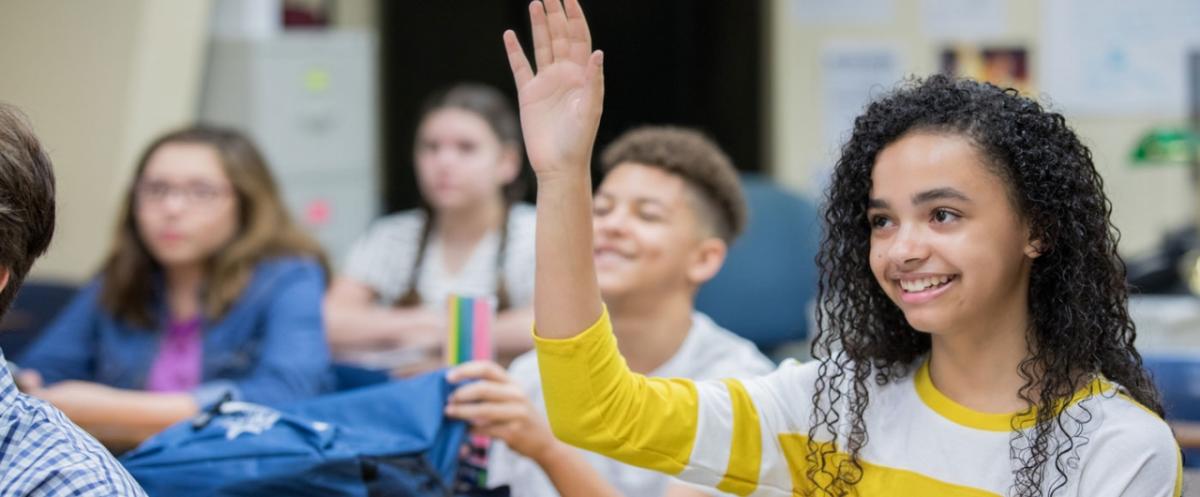Get Smart About Credit: How and When to Talk to Kids About Money
Darlene Goins, head of Wells Fargo’s free, noncommercial financial education Hands on Banking® program, shares information about a new youth digital learning center and how to teach kids about credit.

Get Smart About Credit: How and when to talk to kids about money
When it comes to learning about money and credit, it’s important to start early and form building blocks to prepare kids for their financial future, said Darlene Goins, head of Wells Fargo’s Hands on Banking® program.
“Research shows that gradually teaching kids about money management and credit concepts at a young age is important and will help instill good financial behaviors from day one,” Goins said. “By the time we reach adulthood, using credit responsibly to buy a car, rent an apartment, or start a small business, as well as keeping our identities safe, is all part of participating in the economy.”
Hands on Banking is a free, noncommercial digital learning center provided by Wells Fargo that has resources and tools for adults, young adults, seniors, members of the military, and entrepreneurs in English and Spanish. The program recently launched a Hands on Banking for Youth site to help K-12 students, educators, and families establish healthier financial habits and achieve greater financial stability and success through courses, quizzes, and activities.
Throughout the month of October, hundreds of Wells Fargo team members are volunteering to connect with people of all ages about good money and credit management skills to celebrate Get Smart About Credit day on Oct. 17, an annual financial education outreach campaign sponsored by the American Bankers Association.
To prepare for the event and celebrate the new youth-focused site, Goins shared tips for how people can talk to kids about money.
Q. Why is teaching kids about good financial practices so imporant?
A. I think everybody is hungry for information. The state of financial health in our country is problematic, which is why we selected it as one of the three focuses for our new philanthropic strategy. We introduced the family section on the new digital learning center because caregivers need to prepare kids for their financial future so that, by the time they are adults, they’ve got all the fundamentals.
Q. How can people teach kids about credit?
A. When we think about elementary school kids, the focus is around teaching them about what it means to borrow something and entrust something to a friend. So we ask kids, “Have you ever borrowed something from a friend? What does that mean to you?” You have to take care of it, and you have to treat it as something precious because you have to return it. That starts to introduce the concept of having trust in whoever you’re lending to. Starting to establish those kinds of concepts with young kids will prepare them for when they’re going into middle school.
In middle school, we talk about what it looks like when you borrow money from someone and you not only return the money, but you might have to pay a little extra for the privilege of having that money. And we introduce the concept of interest. When you add in interest, ask kids how they then feel about a purchase or borrowing money. That instant gratification experience of having something now — versus waiting for it — can be discussed within the concept of credit.
That’s really what we’re trying to do at that young age. They may not know what money is in the purest sense, but they are learning the concepts that are related to credit.
Q. Is there a way for kids to build credit early on?
A. For younger kids there’s not, but an ATM or debit card is a great first step for young teens to learn about card safety and how to keep better track of their spending with online tools. A debit card will only allow them to spend what they have available, and many accounts have other useful parental controls that enable caregivers to track or restrict spending — which is very difficult to do with teens who are only spending cash.
For young adults, department store or gasoline cards are options. The nice thing about gas cards is they usually have a low limit, and can only be used at the gas station, which means there’s a bit of control. Caregivers should encourage the practice of paying off the credit card balance at the end of the month, as opposed to carrying a balance from month to month and paying interest.
Another way for your child to start building credit is to add them as an authorized user on your card. The important thing is, if you’re trying to do that to establish a credit file for them, make sure your lender will report the credit behavior on the authorized user’s credit file.
Q. What are some of the other tips people can use when talking to kids about money?
A. Once kids understand the idea of money and credit, introduce them to basic concepts about how to use money wisely. Some general tips for kids of all ages are:
- Have kids recognize needs versus wants. This will help them learn about making choices and trade-offs, setting priorities, and distinguishing between needs and wants.
- Encourage goal setting. Ask your kids to list all of the things they want and then organize their list into immediate, short-term, and long-term goals. Help your kids set goals, and teach them the habit of saving regularly to reach their goals. As an added incentive, consider offering to match what they save on their own.
- Help kids practice saving and spending by providing an allowance. On a small, manageable scale, an allowance lets kids make their own decisions and sometimes mistakes — and live with the consequences.
I’d encourage families to check out Hands on Banking, where they can find information about topics like determining allowances, budgeting for a fun family activity (PDF), understanding health insurance (PDF), and reading a paycheck (PDF). It’s never too early to start having open and honest conversations about money, and our site is there to help.

